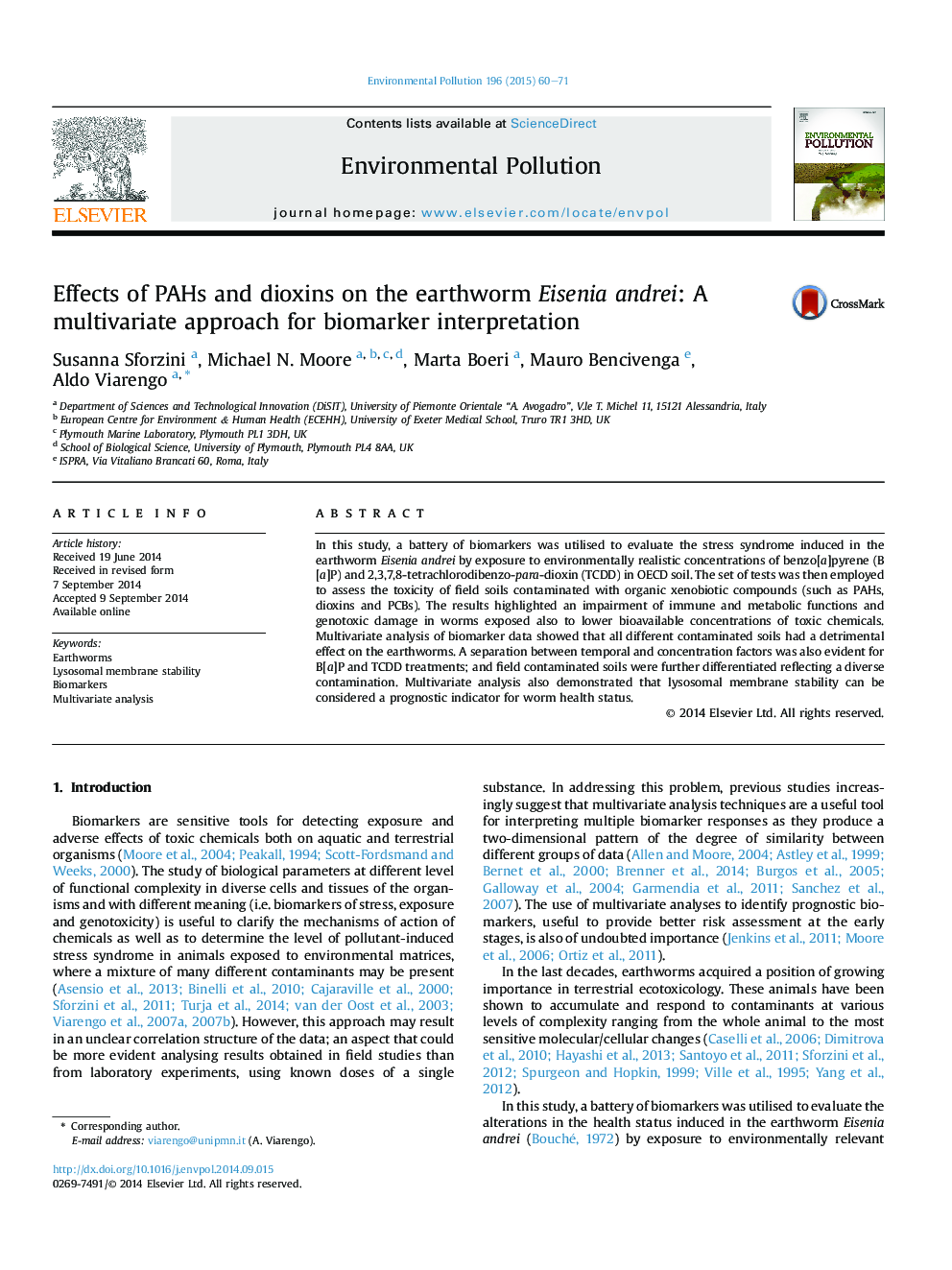| Article ID | Journal | Published Year | Pages | File Type |
|---|---|---|---|---|
| 6317880 | Environmental Pollution | 2015 | 12 Pages |
Abstract
In this study, a battery of biomarkers was utilised to evaluate the stress syndrome induced in the earthworm Eisenia andrei by exposure to environmentally realistic concentrations of benzo[a]pyrene (B[a]P) and 2,3,7,8-tetrachlorodibenzo-para-dioxin (TCDD) in OECD soil. The set of tests was then employed to assess the toxicity of field soils contaminated with organic xenobiotic compounds (such as PAHs, dioxins and PCBs). The results highlighted an impairment of immune and metabolic functions and genotoxic damage in worms exposed also to lower bioavailable concentrations of toxic chemicals. Multivariate analysis of biomarker data showed that all different contaminated soils had a detrimental effect on the earthworms. A separation between temporal and concentration factors was also evident for B[a]P and TCDD treatments; and field contaminated soils were further differentiated reflecting a diverse contamination. Multivariate analysis also demonstrated that lysosomal membrane stability can be considered a prognostic indicator for worm health status.
Related Topics
Life Sciences
Environmental Science
Environmental Chemistry
Authors
Susanna Sforzini, Michael N. Moore, Marta Boeri, Mauro Bencivenga, Aldo Viarengo,
